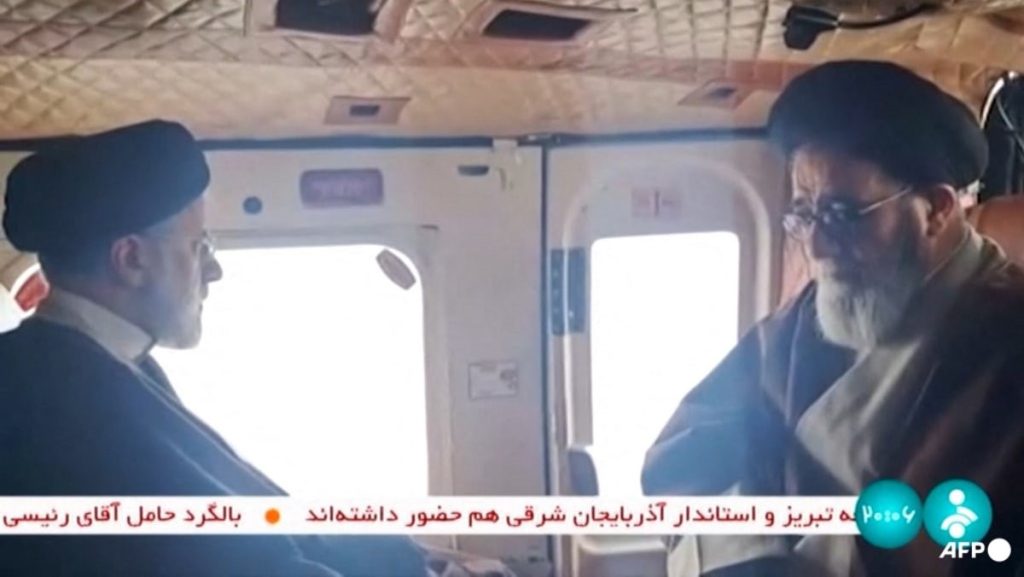London, 20 May 2024 – Iranian President Ebrahim Raisi, a key perpetrator of the 1988 massacre of political prisoners, died in a helicopter crash on 19 May 2024.
His death deprives the families of as many as 30,000 victims of the 1988 mass extra-legal executions and enforced disappearances, of seeing justice served against him.
In 1988, as Deputy Prosecutor of Tehran, Raisi sat on the Tehran Death Commission that sent thousands of political prisoners for execution. The vast majority of the victims were affiliated to the People’s Mojahedin Organisation of Iran (PMOI or MEK).
Justice for the Victims of the 1988 Massacre in Iran (JVMI) will continue to seek justice against the surviving perpetrators of the 1988 massacre.
Timeline of Ebrahim Raisi’s rise to power:
Ebrahim Raisi was born in the city of Mashhad, Khorasan Razavi province, Iran, in 1959. He was 18 years old during the 1979 revolution. Despite lacking a university degree or theological qualifications, he was quickly assigned to various judicial positions.
1979: Raisi trained under the supervision of Mohammad Hosseini Beheshti, who was the new Islamic government’s Judiciary Chief in 1980-81, and he was one of 70 clerical students selected to participate in courses on governance and policy in the new regime.
1980: Raisi was sent to Masjed-e-Soleiman to suppress growing discontent and anti-government protests.
1980: At age 20, Raisi became the district attorney of the city of Karaj. After a few months, he was promoted to Prosecutor of Karaj.
1982: Raisi was appointed as the Prosecutor of Hamedan while retaining his position as Prosecutor of Karaj. He served in both positions until 1983. In this period, mass executions of opposition forces, especially the Mojahedin-e Khalq (MEK/PMOI), were carried out with Raisi serving a pivotal role in these two provinces to suppress opposition movements.
1985: He was appointed as Deputy Prosecutor-General of Tehran. Raisi oversaw the “Grouplets Division” of the Tehran Prosecutor’s Office. The role of this division was to root out the MEK and other opposition forces.
1988: In the summer and autumn of 1988, Raisi was a member of the Tehran Death Commission in Evin and Gohardasht prisons. In the Death Commission, although Morteza Eshraqi held the post of Prosecutor, with Raisi acting as his deputy, according to eye-witness reports and extensive investigations, Raisi actually played the role of Prosecutor. He served as Khomeini’s fixer and received special missions from the Supreme Leader to carry out purges in other provinces, including Lorestan, Kermanshah and Semnan. Khomeini had given Raisi, and Hossein Ali Nayyeri, head of the Tehran Death Commission, full authority, and they were not obliged to obey any administrative or governmental restrictions or orders.
1989: After Khomeini’s death, Raisi was appointed as Tehran Prosecutor by order of Mohammad Yazdi, the head of the Judiciary, and held this position for five years from 1989 to 1994.
1994 to 2004: Raisi was the head of the Inspector General’s Organisation for ten years.
1997: Raisi became a member of the Central Council of the Society of Militant Clergy. 1999: Raisi became a member of the Special Committee to Investigate the University of Tehran Events.
2004 to 2014: Raisi was First Deputy Chief of the Judiciary.
2006: Raisi became a member in the Assembly of Experts as a representative of South Khorasan Province. In 2008, he was elected as a member of the Presidium of the Assembly of Experts. In 2011, his membership was extended for another five years.
2011: Raisi was appointed as a member of the Board of Trustees of the Executive Headquarters of the Imam’s Order (a.k.a. Execution of Imam Khomeini’s Order or EIKO) for 10 years by Iran’s current Supreme Leader Ali Khamenei.
2012: Raisi was appointed by Khamenei as the Attorney General of the Special Clerical Court.
2014-2015: Raisi was Attorney General of Iran.
2016: After the death of the cleric Abbas Vaez Tabasi, Khamenei appointed Raisi as head of Astan Quds Razavi, a multibillion-dollar religious foundation that manages donations to the Imam Reza Shrine in the city of Mashhad. 2017: Raisi participated in the presidential election as a candidate from Khamenei’s faction and lost to Hassan Rouhani.
August 2017: Khamenei appointed Raisi as a member of the Expediency Council.
March 2019: Khamenei appointed Raisi as Iran’s Judiciary Chief.
November 2019: Under Raisi’s control, the Iranian Judiciary had an instrumental role in suppressing anti-government protesters. In subsequent months, the Judiciary handed down and implement death sentence for peaceful protesters.
June 2021: Raisi took part in Iran’s Presidential election, widely believed to be rigged. With all serious challengers having been barred by the Guardian Council from standing, Raisi easily won the poll. He officially took over as President in August 2021.
2022-2023: Raisi was in charge of the deadly crackdown on the nationwide uprising that began with the death of Iranian Kurdish woman Mahsa Amini at the hands of the “Morality Police”.

